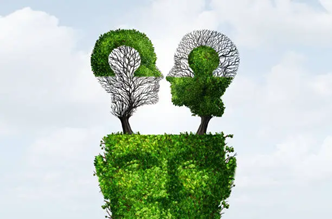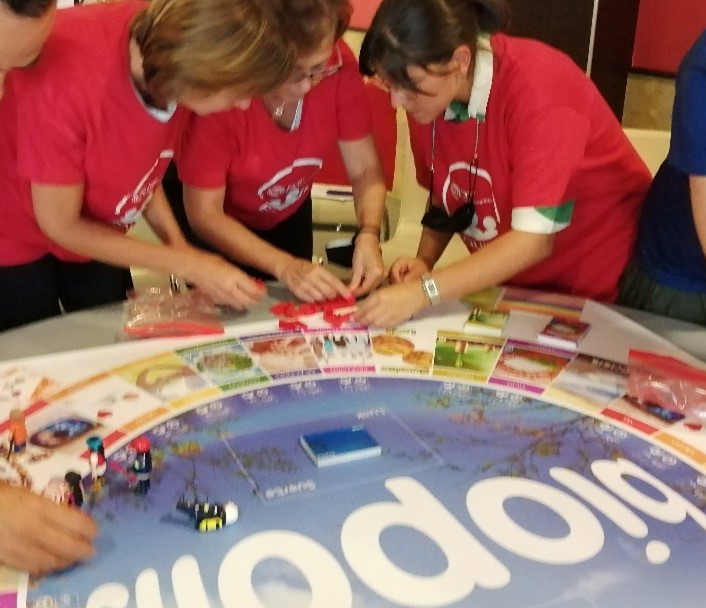The Secrets of Motivation
Have you ever wondered what happens in our brain when we feel motivated?
Where do we get the energy and the will to persevere in complex moments?
The word "motivation" comes from the Latin "motivus," which means "that which moves or impels," and it is related to the idea of recognizing the reason or motive that drives you to do something.
Motivation is a powerful engine that stimulates individuals to overcome challenges, pursue dreams, seek new opportunities, and thrive daily towards personal and professional improvement.

Neuroscience has played a fundamental role in our understanding of how motivation functions in the brain.
Through neuroimaging studies and various experiments, scientists have identified brain regions and neurochemical processes that are related to motivation:
1. Reward System: When we experience or anticipate a reward, this region releases dopamine, a neurotransmitter associated with the feeling of pleasure and motivation.
2. Amygdala: The amygdala is a brain region that plays a fundamental role in motivation, as it can influence our emotional and motivational responses to stimuli.
3. Prefrontal Cortex: It is involved in decision-making, planning, reward evaluation, and the regulation of motivation.

4. Attention and Memory Systems: Selective attention and working memory can influence how we process and respond to motivational stimuli.
5. Neurotransmitters: In addition to dopamine, other neurotransmitters like serotonin, noradrenaline, and glutamate are also involved in motivation and mood.
Research on Motivation?
There are numerous authors who have researched and written about the topic of motivation in various contexts, from psychology to business management. Among them, it is worth highlighting:
1. Abraham Maslow: known for his "Hierarchy of Needs" and his theory on human motivation. In his book "Motivation and Personality," he explored how human needs influence motivation.
2. Frederick Herzberg: This psychologist developed the "Two-Factor Theory" or "Motivation-Hygiene Theory," which suggests that there are motivating factors and hygiene factors in the workplace environment that affect employee motivation.
3. Carol Dweck: Psychologist and professor at Stanford University, known for her theory of "fixed mindset" and "growth mindset." One of her books, "Mindset: The New Psychology of Success," explores how our beliefs about our abilities and how we approach challenges can influence our motivation and success.
4. Albert Bandura: Known for his "Social Learning Theory" and his research on self-efficacy, which relates to a person's belief in their ability to achieve goals and its influence on motivation.
5. David McClelland: He developed a psychological theory that focuses on three motivators of a person: Achievement, Affiliation, and Power.
6. Angela Duckworth: In her book "Grit: The Power of Passion and Perseverance," she argues how passion and perseverance are key elements for achieving success, and "grit" (determination) is an essential factor in motivation.
7. Daniel H. Pink: Author of "Drive: The Surprising Truth About What Motivates Us," argues that there are three main factors of motivation: autonomy (the need to have control over our lives), mastery (the desire to improve in something that matters to us), and purpose (the sense of working toward a larger goal).
According to Gallup, in their "State of the Global Workplace" report, only around 15% of employees worldwide are engaged and motivated in their work.

How to increase your team's motivation:
1. Set Clear and Achievable Goals: Ensure that everyone understands how their work contributes to achieving these goals.
2. Effective and Empathetic Communication: Listen to their ideas, concerns, and suggestions, and provide constant and constructive feedback.
3. Recognition and Rewards: This can include praise, awards, bonuses, or other meaningful forms of recognition for the team.

4. Empowerment and Development: Provide training opportunities, necessary resources, and encourage shared decision-making.
5. Create a Positive Environment: Foster collaboration, creativity, and a culture of appreciation.
6. Challenges and Variety: Offer your team new and interesting challenges. Monotonous and repetitive work can decrease motivation.
7. Inspirational Leadership: Motivate your team with your enthusiasm, example, flexibility, and commitment to individuals.

References:
a. "Drive: The Surprising Truth About What Motivates Us" by Daniel H. Pink
b. "Motivación: Descubre el Poder de tu Motivación Interior" by Álex Rovira and Fernando Trías
c. "Motivación 360º: Cómo Estimular el Entusiasmo en el Equipo de Trabajo" by David Fischman




